


11 Brands That Work with Micro Influencers in 2025
Micro-influencers are taking the marketing world by storm, proving that follower count is no longer the main metric for successful partnerships. With follower ranges typically between 10,000 and 100,000, these influencers are driving more authentic, targeted campaigns, offering brands like Glossier, HelloFresh, and Daniel Wellington a personal touch that macro-influencers often lack.
Recent statistics show that only 14% of marketers now prefer working with celebrity influencers, highlighting a significant shift towards smaller creators. Brands like Coca-Cola and Sephora recognize the value of these smaller influencers, consistently collaborating with them on platforms such as Instagram, TikTok, and YouTube to tap into highly engaged and loyal audiences.
If you're concerned that a smaller following might limit your brand partnerships, this article will demonstrate how brands are increasingly embracing micro-influencers to build meaningful connections, increase engagement, and achieve impressive results.
Why Do Brands Choose Micro Influencers Over Celebrities?
At first glance, you might think that brands would prefer working with macro influencers due to their large followings. However, this isn’t the case most of the time. So, how do brands benefit from micro influencer marketing? Let’s go over the main benefits you can provide brands as a smaller creator.
Micro Influencers Offer Higher Engagement Rates
The lower an influencer’s follower count, the higher their engagement rate. Micro-influencers maintain 7X higher engagement rates on Instagram than mega-influencers and celebrities with more than 1 million followers.
As a comparison, let’s compare two beauty influencers with different following sizes. Monica Hamada is a US beauty macro influencer who has more than 300K followers. She also has an impressive ER of 21.29%.

On the other hand, Emily from Skin Illustrated is a micro influencer with almost 100K followers. Despite that she doesn’t even have half the number of followers that Monica has, she has double the engagement rate, with an ER of 41.10%

Micro Influencers Are More Cost-Effective
One of the main advantages for brands to work with smaller creators is that they offer a lower price than macro influencers or celebrities. In the table below, you can see the average influencer pricing depending on the platform and size:
Micro Influencers Are More Trustworthy
82% of consumers affirm that they are more likely to listen to a micro influencer recommendation than to bigger influencers. The main reason is that they trust that their recommendations are more authentic.
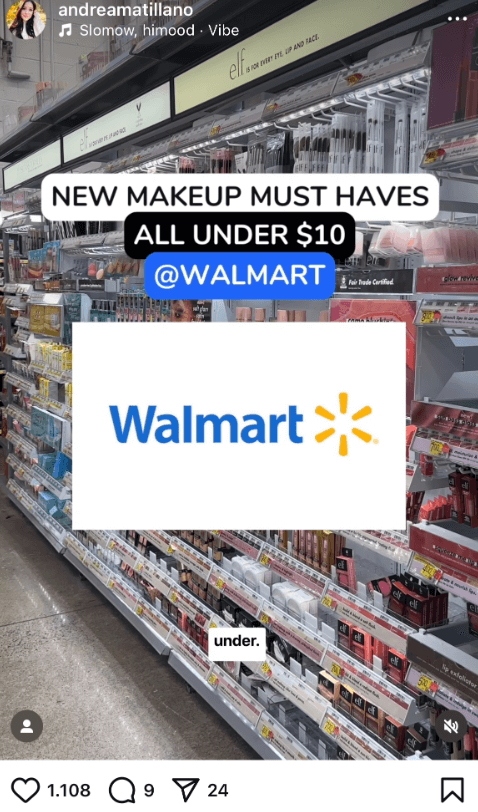
Micro Influencers Provide Higher Conversion Rates
Micro influencers are known for delivering higher conversion rates compared to their larger counterparts, largely due to the trust and credibility they’ve built with smaller, more engaged audiences. With over a 20% higher conversion rate, brands benefit from this deep connection because micro influencers recommendations are perceived as more genuine and relatable.
Micro Influencers Have Niche Communities

One key reason brands are increasingly turning to micro influencers is their access to highly engaged niche communities. Micro influencers cater to specific interests, whether in beauty, fitness, tech or fashion. These niche communities trust the influencer's expertise and are more likely to act on their recommendations. Influencer marketing statistics consistently highlight that micro-influencers build stronger trust and authenticity.
Top Brands Collaborating with Micro Influencers
1. Coca Cola
Working with Coca-Cola is not as impossible as it seems. Despite being a corporate giant, the brand does not only work with celebrities, as you may see in the billboards. They’ve launched campaigns targeting what they call “The Magic Middle,” people who are not paid bloggers and do not have thousands of followers but do have strong engagement in their channels.

In one of their campaigns, Coca-Cola recruited 14 Instagram influencers to become its brand ambassadors, some of whom had less than 100K. Their role was to integrate Coca-Cola into their lifestyle content. This campaign was effective in targeting the European market as it focused on authentic experiences rather than branded content.
2. Sephora
Sephora is one of the most popular cosmetic brands globally. They often collaborate with beauty influencers to create YouTube tutorials featuring well-known beauty personalities. However, they have a diversified strategy and also work with micro influencers to feature products that need more personalized promotion.

These influencers can establish deeper connections with their audience as they have tight and engaged communities. This allows Sephora to ensure that the promotions resonate deeply with potential customers.
Sephora created an influencer program called Sephora Squad, which invites influencers from all backgrounds and sizes to apply and become partners. Among the benefits you receive are: professional development (you’ll have beauty mentors guiding you), boxes with Sephora Squad Gear products, brand events, glam sessions and more.
3. Mejuri
Mejuri is a fine jewelry brand that works with micro influencers as a key part of its growth strategy. This enabled them to reach highly engaged communities on Instagram and YouTube, which aligned with its target demographic of millennial and Gen Z women.

When they started, they used an affiliate marketing program to send small influencers free products to promote on Instagram. Since then, the brand has seen a significant growth. However, despite working with celebrities and models, they still maintain their affiliate program.
Mejuri’s affiliate program allows you to enjoy free products in exchange for posting. You’ll also earn 5% on all sales, with an average sale of $150 and a cookie period of 30 days.
4. Dyson
Dyson, known for its premium household appliances and the viral Dyson Airwrap, has also worked with micro influencers to enhance its brand presence.
One of their key strategies has been collaborating with micro influencers in the home, lifestyle and beauty sectors. For example, influencers who focus on interior design or beauty routines have promoted Dyson’s products like the Dyson Airwrap and Dyson V11 vacuum, highlighting how these premium products can fit seamlessly into a well-curated lifestyle.
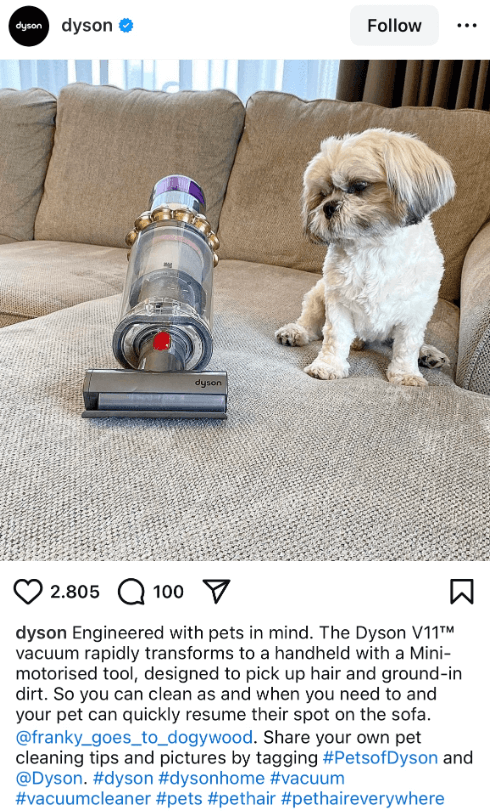
One of their most successful campaigns was when they partnered up with micro influencers to promote their new vacuum cleaner targeted for pet owners. They had free creative freedom to show how their products are great for pet owners. They only had to use a campaign hashtag and try to make their posts light and funny. The results? They achieved over 1 million views, a total of 115,000 likes and a 10% engagement rate.
5. Dunkin’
When Dunkin Donuts rebranded to Dunkin’, they used influencer marketing. As part of their strategy, they targeted millennial nano- and micro-influencers with up to 50,000 followers to engage new customers.
With its Sipping is Believing rebranding campaign, Dunkin’ no longer wanted to be seen as the place for donuts but also wanted to become a preferred destination for coffee lovers. To do this, they launched this campaign by working with smaller influencers who focused on creating content where coffee took center stage.
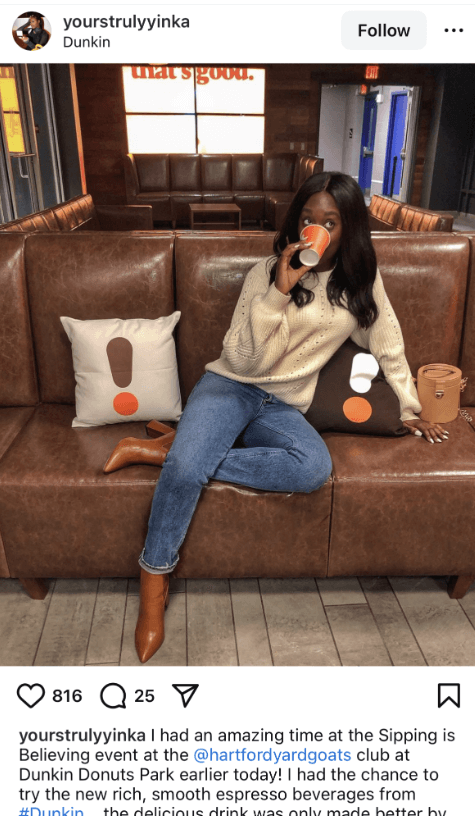
Additionally, Dunkin’ has an ambassador program perfect for micro influencers. All you have to do is share behind-the-scenes content of what’s like to work at the chain as well as their delicious coffee creations.
6. Glossier
Glossier is a well-known online beauty brand that built its $1.8 billion empire by using multiple marketing strategies, such as partnering with micro influencers to promote its products.

Glossier's use of micro influencers often involves collaborations where these individuals create content featuring Glossier products, share their honest reviews and engage with their followers, helping to drive brand awareness and authenticity. Additionally, by using UGC content created by their clients, they transformed them into brand ambassadors.
Glossier also has an affiliate program where you can promote their products and gain commission in exchange in a natural and authentic way.
7. Supergoop
Supergoop understands the importance of authenticity, and to promote their SPF, they have partnered with micro-influencers who create lifestyle content that showcases the products naturally.
While they have partnerships with macro creators like Abbey Yung, they also collaborate with smaller creators.

You can become part of their affiliate program, called Sunshine Crew, where you can receive their latest products, post and share and get rewarded with a 10% commission on each sale!
8. Warby Parker
Thanks to influencer marketing, popular eyewear brand Warby Parker has improved its social media presence by 200. With its hashtag #WarbyParker, the brand has achieved over 251K posts on Instagram.
While the brand has collaborated with celebrities like Jimmy Fallon, it often partners with micro-influencers who promote their eyewear collection on Instagram.
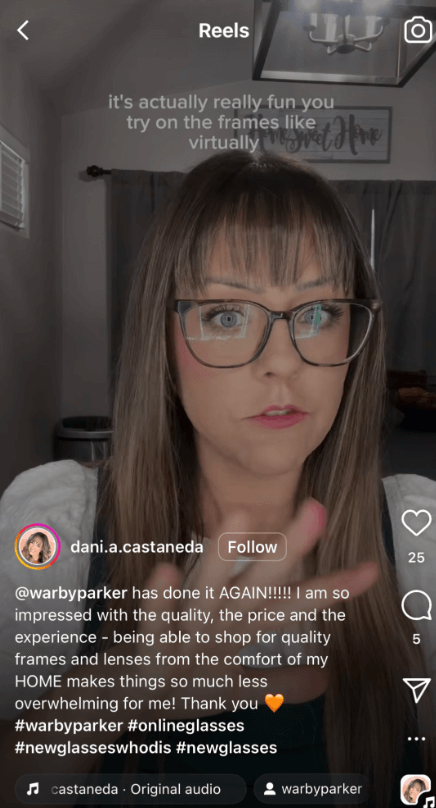
9. Daniel Wellington
Daniel Wellington is one of the pioneer brands in influencer marketing that started working with digital creators before the term “influencers” was actually a thing.
With only $20,000 meager, the watch brand was able to sell $228M in watches.
The strategy? They started to work with all types of influencers, offering free products.

UGC campaigns became so popular with hashtags like #DWpickoftheday, that the brand started asking influencers for permission to use their content and collaborate with them.
Currently, Daniel Wellington has a well-established Brandbassador program that anyone, regardless of the number of followers, can apply. Among the benefits, you’ll receive comission, discounts, free products, cash, etc.
10. HelloFresh
HelloFresh is a meal kit delivery service that works with influencers in the food, wellness and lifestyle spaces to promote its easy-to-cook plans. These influencers share their experiences unboxing and preparing HelloFresh meals.

In one of their campaigns targeting the Australian audience, HelloFresh used a hybrid approach, partnering with micro and macro influencers. Each influence received 4 weeks of HelloFresh meals in exchange for 1 feed post and 3 IG stories. Additionally, they received commission for the sales they made.
The results? They targeted over 586K users on Instagram and created 160 pieces of content.
HelloFresh continues working with multiple influencers on their campaigns. To apply, you can fill out a form on their website.
11. Pura Vida Bracelets
Pura Vida Bracelets is an artisanal bracelets brand from Costa Rica that provides sustainable jobs for artisans and raises awareness for multiple charities.
The brand works with micro influencers to tap into lifestyle, travel and eco-conscious communities.

Pura Vida has a brand ambassador program that doesn’t require a minimum of influencers to apply. Among its benefits, you’ll receive a free product, cash commission and experiences.
How Much Do Brands Pay Micro Influencers?
Generally, brands pay nano and micro influencers between $10 and $5,000 per sponsored post. The difference is because it depends on several factors such as platform, engagement rate, niche and content format. Here’s a more detailed breakdown regarding influencer pricing:
Tips to Get Brand Deals as a Micro Influencer
If you’re just starting out as an influencer and looking to secure brand deals, these are simple yet effective strategies to help you prove your value to potential partners:
Create a Portfolio
A well-organized portfolio is the perfect way to show brands what you can do for them. You can even consider building a portfolio website to stand out. They’ll be able to see first-hand the quality of your content, your previous collaborations (if you have any), the different formats you work with, etc.
It helps them understand more about your audience, aeshtetic and creativity, showing how you can align your content with their brand’s goals.
Show Metrics
As a micro influencer, brands are not expecting you to have specific metrics like a huge follower count. They’re more interested in learning how despite having a small follower count, how your audience reacts. This translates into engagement rates, reach, and audience demographics. You can highlight statistics like likes, comments, shares and impressions. Transparency with metrics builds trust and helps brands see your value.
Create Quality Content
Besides metrics, one of the most important aspects brands see is the quality of your work. As an influencer, content is everything. Make sure that your visuals are professional and that you focus on delivering value through your posts.
Regardless of your niche, brands are attracted to influencers who consistently post well-edited videos, photos or blogs.
Engage with Your Community
Take advantage your biggest asset as a micro-influencer: your audience. Brands often seek out micro-influencers because of the stronger, more personal connection they have with their followers.
To maximize this advantage, engage consistently—respond to comments, like posts, ask questions, and foster meaningful conversations within your community.
Securing Brand Deals as a Micro Influencer
As a micro-influencer, you have a unique opportunity to connect with brands in a way that feels authentic and engaging. By focusing on building genuine relationships with your audience, maintaining high engagement rates, and showcasing your creativity, you can secure valuable brand deals that align with your personal style and values.
Brands are increasingly looking for influencers like you—those who can offer trust, relatability, and niche expertise. Start refining your content, keep your portfolio updated and don't be afraid to reach out to the brands you love.





.svg)

%201.png)


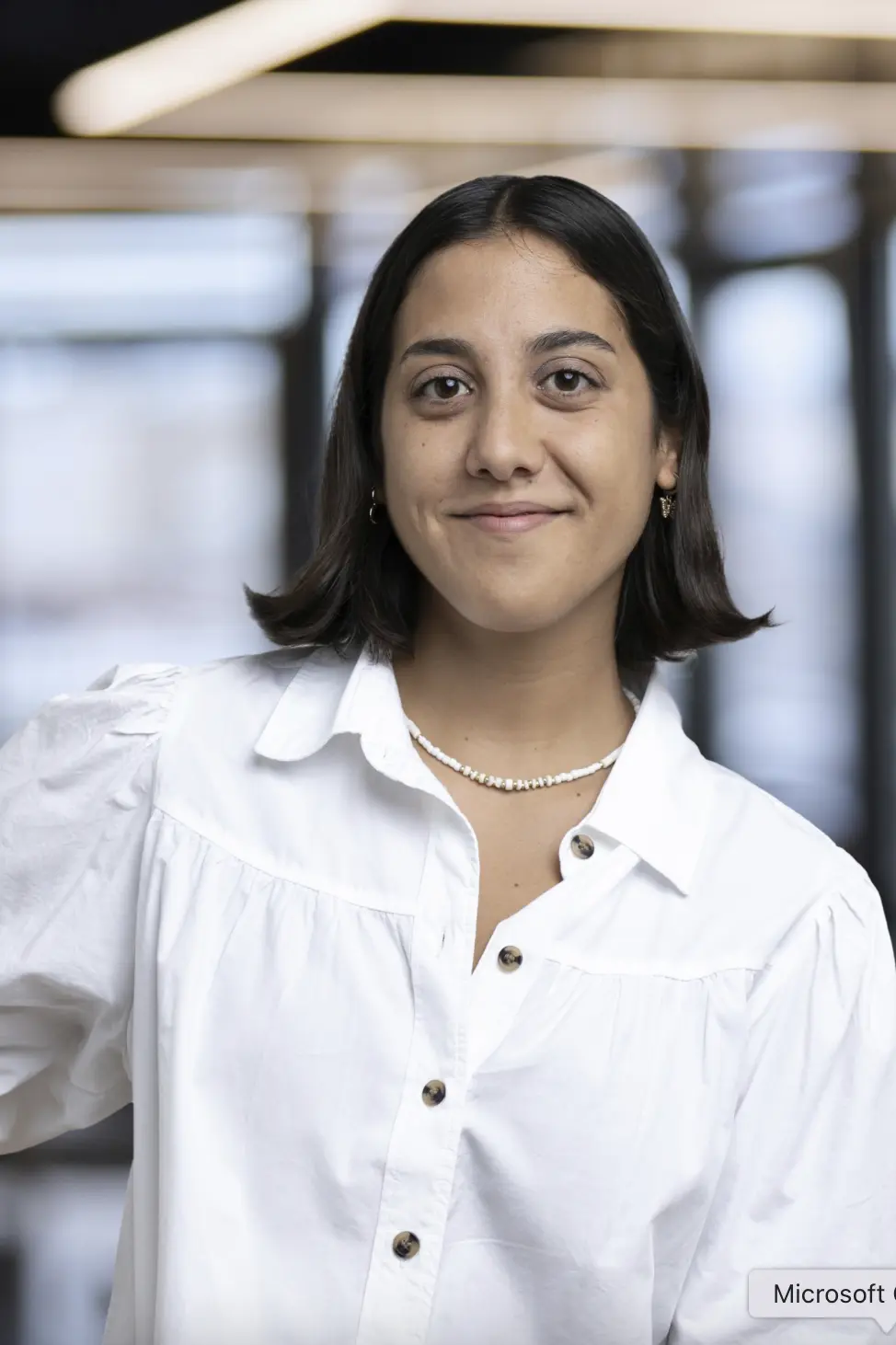









_logo.svg.png)








